Case Studies.
Add Case Study
Our Case Study database tracks 22,657 case studies in the global enterprise technology ecosystem.
Filters allow you to explore case studies quickly and efficiently.
Download Excel
Filters
-
(6,653)
- (2,601)
- (2,127)
- (945)
- View all
-
(5,642)
- (2,469)
- (1,692)
- (826)
- View all
-
(5,571)
- (2,178)
- (1,766)
- (643)
- View all
-
(5,247)
- (2,179)
- (1,715)
- (1,321)
- View all
-
(2,881)
- (1,448)
- (574)
- (376)
- View all
- View all 15 Technologies
- (1,985)
- (1,985)
- (1,915)
- (1,679)
- (1,629)
- View all 42 Industries
- (8,728)
- (4,742)
- (3,618)
- (3,233)
- (2,947)
- View all 13 Functional Areas
- (3,304)
- (2,787)
- (2,603)
- (2,006)
- (1,630)
- View all 129 Use Cases
- (13,581)
- (5,296)
- (4,272)
- (3,520)
- (2,856)
- View all 9 Services
- (504)
- (432)
- (416)
- (382)
- (301)
- View all 1083 Suppliers
Selected Filters
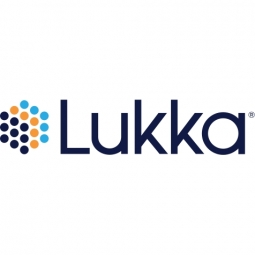
|
Trident Trust's Transformation in Crypto Fund Administration with Lukka
Trident Trust, a global leader in fund administration, faced significant challenges when it first ventured into the crypto space in 2017. The company had to collect its clients' crypto transactional data through mechanisms that were often cumbersome and unsustainable, such as manual input, files, and screenshots. Once the data was collected, Trident used spreadsheets to apply price and derive the trading activity value. This process was not only laborious but also required Trident to manually transform the data into a format that was easily consumable by traditional fund accounting systems. The lack of automation and the need for manual intervention made the process inefficient and prone to errors.
|
|
|
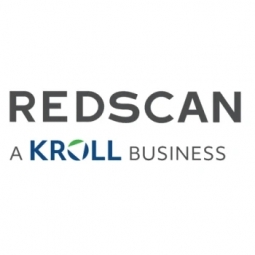
|
Proactive Cyber Security Measures for a Global Shipping Company
The case study revolves around a global shipping company, one of the largest in the world, with over 135 years of experience in the industry. The company manages around 600 vessels and employs 20,000 people on shore and at sea, through nine ship management centres worldwide. The company was aware of the potential damage cybercrime could inflict on its operations, finances, and reputation, especially after the NotPetya malware attack on Maersk in 2017. The company had some security controls in place, but these did not provide visibility across its complete hybrid cloud infrastructure, including Office 365. They also lacked confidence that attacks would be identified quickly enough to minimise potential damage and disruption. With a relatively small number of IT specialists for its size, the company sought a third party to help with day-to-day threat detection, enable a more proactive approach to cyber security, and mitigate future security risks. They also needed to ensure that appropriate controls and processes were in place to meet all its data protection obligations, including the ability to detect and report breaches in line with the GDPR.
|
|
|
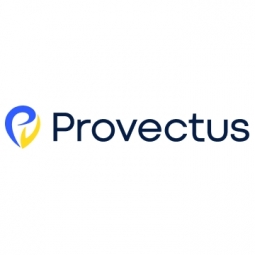
|
Lumin Digital's Transformation: Leveraging Modern Data Platform for Advanced Analytics and AI/ML Use Cases
Lumin Digital, a fintech company specializing in digital banking solutions, was seeking to build a modern, multi-tenant data platform to support advanced analytics, reporting, and enable various AI/ML use cases. The initial use cases identified were focused on improving abilities to monitor and detect risk involving user sessions and ACH transactions. The company's mission was to help financial organizations preserve and nurture their relationships with customers in today's evolving market. To meet their ambitious goals, Lumin needed a trusted partner to design and build the desired data platform, implement AI/ML use cases, and ensure that the platform was optimized for stable, cost-efficient performance.
|
|
|

|
Migration to Secure Infrastructure: TripActions' Journey to PCI-DSS Compliance
TripActions, a corporate travel management organization, faced a significant challenge in enabling secure banking transactions without the need for third-party services. The company aimed to accept customer payments directly, track all banking transactions processed through the platform, and securely collect and store critical and client-sensitive data. To achieve these objectives and spur revenue growth by attracting new enterprise clients, TripActions needed to migrate its platform to a secure PCI-DSS-compliant infrastructure. However, the existing infrastructure had several network, user access, monitoring, alerting, and CI/CD issues that needed to be addressed. The company approached Provectus to upgrade their infrastructure as part of their preparation for PCI-DSS compliance certification.
|
|
|

|
Adapting to User Behavior Changes: A Case Study on BetterMe's Use of Amplitude
BetterMe, a leading behavioral healthcare app publisher, faced a significant challenge during the pandemic. Despite being well-positioned to capitalize on the shift from gyms and group fitness classes to home workouts, the company found itself in catch-up mode. The behavioral changes of its users, such as the marked increase in time users were spending on the app, required rapid adaptation. The main challenges were the speed of experimenting and responding to user needs while maintaining a high satisfaction level. The company needed to balance velocity and satisfaction levels, which was a complex task. Additionally, BetterMe needed to understand how its new features were affecting user retention and revenue rates, and which releases were gaining traction and which were not.
|
|
|
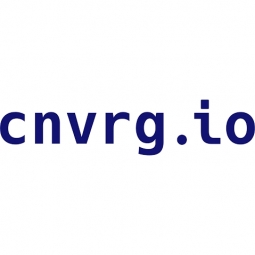
|
Enabling Self-Service MLOps and Faster ML Delivery at monday.com
Monday.com, a work operating system (Work OS) that allows organizations to manage every aspect of their work, faced significant challenges in implementing machine learning (ML) solutions. The company's data team, BigBrain, was responsible for the data and analytics platform and ML initiatives. However, as demand for ML solutions grew, the data scientists found themselves heavily reliant on engineers to bring models to production. This resulted in a high time to value, with models often waiting for deployment until a developer was available to set up the infrastructure. Furthermore, the data scientists were siloed and had a disconnected workflow between where the model was trained, deployed, and monitored, creating unnecessary complexity. Key pain points included excessively high time to value due to production bottlenecks, dependency on developers and engineers for deployment, missing critical MLOps capabilities, inability to consolidate distinct endpoints into a multi-model endpoint pattern, and disjointed workflow due to each data scientist working with different machine learning tools.
|
|
|
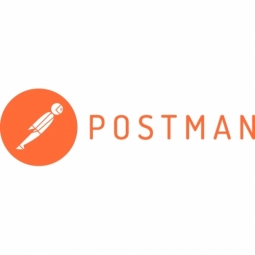
|
ChargeHub Boosts Developer Productivity and API Quality with Postman
ChargeHub, a service that helps drivers locate over 120,000 public EV charging points across North America, faced a significant challenge in maintaining its always-on platform. The company aggregates real-time data from third-party providers and its community of drivers, which it then makes available to drivers through its mobile and web apps. ChargeHub's API is also featured in mapping products, in-car entertainment systems, and elsewhere. The company recently launched ChargeHub Passport, an app that allows drivers to use multiple charging networks. With thousands of consumers relying on ChargeHub and strict SLAs governing API availability to partners, there was no room for downtime or inaccurate data. The challenge for ChargeHub's agile engineering teams was to maintain high-quality standards without compromising productivity. They identified handover between teams as a particularly risky moment in their development lifecycle, with ad hoc methods of teaching and learning APIs damaging both productivity and code quality.
|
|
|
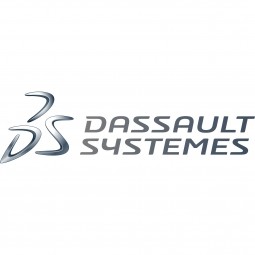
|
Lenovo ThinkPads Get Tougher and More Sensitive with Abaqus FEA
Lenovo's ThinkPad line of laptops is known for its aesthetics and durability. However, the challenge lies in ensuring that the laptops are not only portable but also durable. The laptops face demanding loads and forces even when they’re just being carried from place to place. It’s important for the covers to be stiff enough, with minimal deformation, so that the rear cover will protect the display, while the base cover protects the motherboard. Another challenge was to reduce the thickness of the keyboard assembly without losing the traditional keystroke feel.
|
|
|
|
|
Keurig Dr Pepper Reveals the Role Automation Played for Them, Saving $2.5 Million in One Year
The financial services team at Keurig Dr Pepper relied on 3rd party vendors, outsourcing their Cash Application and other A/R functions to control costs. This led to limitations such as restricted access and control. Moreover, outsourced contracts prevented shifting to other platforms or discontinuation of services before the contract period. A lack of metrics and statistics made tracking outsourced resource productivity challenging, causing inconsistencies across processes and creating complications for the A/R team. They thus decided to reevaluate whether they wanted to continue their contract or more operations in-company to have more power and visibility over their processes. Keurig Dr Pepper took a leap by deciding to move their cash application process in-house, but new challenges appeared. The biggest issue the teams faced was that they were strapped for time to cover all critical accounts. In the case of check images and remittances flowing in through disparate sources for e-payments, the team had to link every payment and remittance and code deductions manually. The A/R processes were utterly manual, and there were no worklists incorporated to help analysts prioritize work, leading to time-consuming, inefficient, and wasteful processes.
|
|
|
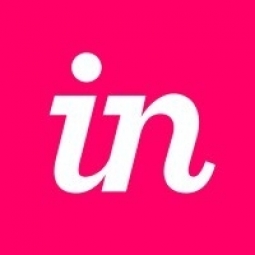
|
USAA's Digital Transformation: Scaling Design and Enhancing Customer Experience
USAA, a fully integrated financial services organization, was facing the challenge of scaling its design process to meet the needs of its growing digital customer base. The company, which has been committed to digital growth since the launch of its first website in the 1990s, was looking for ways to bring exceptional service to all digital channels without compromising efficiency or empathy in the design process. The challenge was to maintain technical design consistency across all product teams and to develop a design-specific scorecard that could monitor engagement with compliance and legal, as well as the accessibility of the design program. Another challenge was to develop individual designers' skills and deploy them within the lines of business to work on specific projects.
|
|
|
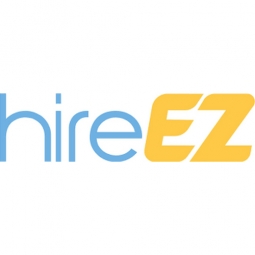
|
Ubik Streamlines Tech Team Building with Hiretual
Ubik, an outsourcing company that specializes in building tech teams, was facing a significant challenge in sourcing candidates quickly and efficiently. The company's CEO and founder, Mike Bysiek, who has a rich history of working with big names like Xerox, Johnson & Johnson, and American Express, realized the need for a tool that could expedite the process of finding suitable candidates. The challenge was not just about finding candidates, but finding the right ones that align with the business goals of the company. The traditional methods of sourcing were proving to be time-consuming and less efficient, which was a major hurdle in the smooth operation and growth of the company.
|
|
|
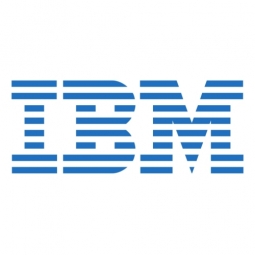
|
Allstate enhances and streamlines human resource management with SuccessFactors and IBM
Allstate Insurance Company was facing challenges with its existing human resources applications. The extensive customization of the software had resulted in powerful functionality, but it was not user-friendly and introducing new functionality was time-consuming and often cost-prohibitive. The company wanted to enable the newest talent management solutions, at a more rapid pace, and keep operational costs low. The challenge was to deploy a new solution successfully and gain all the benefits of cloud-based solutions while ensuring that Allstate continued to retain a single integrated system of record.
|
|
|
---nasdaq--amzn_14.jpg)
|
GE Healthcare Launches Health Cloud on AWS, Improving Collaboration and Patient Outcomes
GE Healthcare, a leading manufacturer and distributor of diagnostic imaging equipment, was seeking to improve patient outcomes by reducing workflow processing time through the sharing of medical image data across specialists and referring physicians. The company wanted to increase the value derived from device usage and data by enabling the leverage of cloud compute, storage, and access. The challenge was that up to 35 percent of patient cases were being misdiagnosed, partially due to a lack of access to images, data, and records. Additionally, better interoperability between systems could save healthcare ecosystems $30 billion per year, according to GE Healthcare.
|
|
|
---nasdaq--amzn_14.jpg)
|
From Cows to the Cloud: How TINE is Revolutionizing the Norwegian Dairy Industry Using Machine Learning on AWS
TINE SA, a Norwegian cooperative owned by farmers, has been collaborating with Norway’s farmers for over 160 years to understand their challenges and help them drive efficiency, productivity, and high-quality dairy product development. As market demands increase, so does each farmer’s need to bring products to market more efficiently. TINE has a long history of developing decision-making tools for farmers and collecting data from different dairy products at the farm level. However, as TINE considered the future of dairy production at both the farm and national level, its data science team realized there would be changes to the breadth and depth of its data sources, types of data, and data analysis capabilities available to develop decision-making tools for farmers to use in production. TINE knew it would have to change its approach to data and technology by becoming more data driven as an organization to drive better predictability of milk production and other key data points related to a cow’s health and the quality of milk produced.
|
|
|
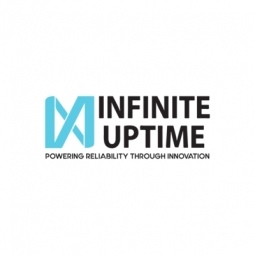
|
Smart Ccondition Monitoring Saves USD 30 Thousand In A Forging Unit
The 1000 Ton main forging press had a 75 HP motor and fed a trimming machine. The motor pulley combination was situated on top of the Press at a height of about 15 feet thereby reducing its access for routine maintenance. The company found difficulty ensuring constant uptime of the Press.
|
|
|

|
Digitizing Patient Records: A Leap in Cancer Treatment and Research
The cancer treatment and research center was facing a significant challenge in managing and accessing its vast volumes of patient data, which were primarily in paper format. The institution's unique approach to treating patients as a whole, rather than a series of isolated maladies, resulted in extensive patient medical records. The sheer volume of these paper records often made it difficult for clinicians and researchers to rapidly and reliably access the information they required. This situation was negatively impacting productivity and causing delays. Furthermore, the practice of 'checking out' medical records for research purposes often left clinical teams without immediate access to these records, especially in cases of unexpected patient visits. The center needed a more effective way to work with patient information that would enhance the delivery of prompt diagnosis and treatment, and accelerate the progress of vital research work.
|
|
|
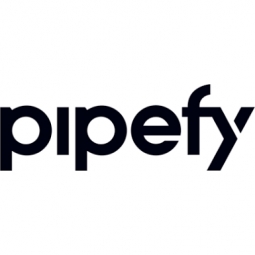
|
Alvaz's Journey to Efficient HR Request Management with Pipefy
Alvaz, a Brazilian agritech company, faced significant challenges due to its rapid growth. With each new crop cycle, the demand for their services increased, leading to a surge in the number of employees and the need for better process organization. In 2019, the company grew from 5 to 20 employees, making traditional methods of communication and process management insufficient. As Alvaz expanded into more countries and Brazilian states, the need for a reliable system to manage employee requests to the central office became evident. These requests were primarily equipment-related, including uniforms, safety equipment, and drone maintenance parts. By 2020, with around 30 employees, Alvaz was frequently missing deadlines and lacked visibility over the status of their many requests. The company needed a solution to manage their requests and improve the employee experience.
|
|
|

|
JDE's Integration of Sales and Financial Planning with Board
Jacobs Douwe Egberts (JDE), a global agribusiness group specializing in coffee and tea, was facing challenges in managing its commercial steering and financial management. The company, which operates in over 80 countries and generates annual sales of more than €5 billion, needed a tool that could consolidate the progress of negotiations in relation to the initial budget and analytically manage all customer investments by category. The tool also needed to support the S&OP process, manage product/customer mix, pilot pricing strategy, and ease the exchange of information between different services. On the financial control side, JDE required a solution that could value plans by segment, brand, and customer, steer profit up to full P&L (real + forecast), and facilitate budget comparisons and reporting.
|
|
|

|
Financial Process Transformation at OTC Industrial Technologies through IoT
OTC Industrial Technologies, a rapidly growing industrial solutions provider, faced significant challenges in managing its financial processes across 65 branches and 54 service/repair locations. The company had grown through the acquisition of 30 companies, each with its own ERP system. OTC's initial strategy was to patch together these disparate ERP systems to manage their financial processes, particularly financial consolidation. However, this approach resulted in a lengthy and inefficient consolidation process. The company had to deal with multiple General Ledger (GL) systems and detailed financial and sales reports coming from various dimensions across the business. The consolidation process was not only time-consuming but also lacked the efficiency and accuracy required for effective financial management.
|
|
|
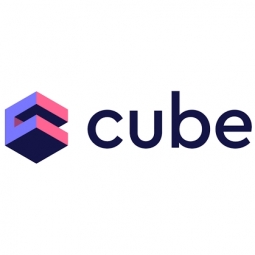
|
Leveraging Cube Semantic Layer for Data Consolidation in Healthcare: A COTA Case Study
COTA, a healthcare company founded in 2011, specializes in combining oncology expertise with advanced technology and analytics to organize real-world medical treatment data for cancer research and care. They have access to millions of electronic oncology patient records, a data volume unmatched in the oncology healthcare industry. One of their products, the Real World Analytics (RWA) solution, helps clinicians and researchers make sense of fragmented and often incomplete electronic health records (EHR) data. However, COTA faced challenges with their existing off-the-shelf solutions like Qlik and Tableau, which required heavy customization and specialty configuration knowledge. They sought a more developer-friendly ecosystem that could handle their vast data and provide a single source of truth.
|
|
|

|
Jobber's High-Performance Embedded Dashboards with Cube
Jobber, a leading provider of business management software, supports over 50 industries and has serviced over 15 million households in more than 47 countries. A crucial tool for Jobber's customers is dashboards that provide a snapshot of their businesses, helping them schedule their day, optimize routing, keep track of invoices, accept payments, and more. However, as Jobber's business scaled and accumulated close to a decade of data, the dashboard performance began to slow down. The team tried to address these performance issues through caching, query optimization, and database tuning, but they realized that more needed to be done. The challenge was to find a solution that could handle the large amount of data and still deliver high-performance dashboards.
|
|
|

|
Building Advanced Analytics with Cube Semantic Layer and Vue.js: A Qualibrate Case Study
Qualibrate, a SaaS company based in Amsterdam, was seeking an effective way to provide its users with the flexibility of advanced reporting and simplicity in generating dashboards. While there were several great products available in the market such as Kibana and Grafana, Qualibrate wanted to offer a seamless experience within their own platform. The challenge was to find a solution that would integrate well with their current platform which uses Vue.js. After considering various options, they found Cube from Statsbot.co to be a perfect fit for their use case. However, there was a significant caveat - Cube did not have an implementation for Vue.js. This led Qualibrate to consider working with the community to improve the MongoDB connector and integrate Cube into their workflow.
|
|
|

|
Ternary's Innovative Approach to Managing Customer Generated Data at Scale
Ternary, a FinOps platform provider for Google Cloud (GCP) customers, was facing the challenge of managing and analyzing the large volume of cost-related data generated by its rapidly growing customer base. The platform, which aids cloud engineers, IT finance, and business teams in optimizing public cloud costs, had to deal with the complexities of providing a SaaS platform at scale. The challenge was to break down costs by projects and other dimensions across a time series for users with many values in a given dimension. The company was frequently running into issues with Cube’s response limit of 50,000 rows, which could result in incomplete datasets and inaccurate total cost calculations. The challenge was to present complete, accurate data to users, enabling them to perform multidimensional analysis of vast volumes of cost data.
|
|
|

|
Revolutionizing Healthcare Claim Denials: Advent Health Partners' 500% Productivity Lift
Advent Health Partners, part of the Powered Health group, was facing a significant challenge due to rapid changes in healthcare regulations in the United States. The re-introduction of the Recovery Audit Contractor (RAC) program and the move to Electronic Medical Records (EMRs) had left many hospitals struggling to keep pace. This resulted in inefficiencies in the healthcare revenue cycle, with billions of dollars tied up in insurance claims denials. The situation was further complicated by the fact that hospital data, both structured and non-structured, was generally stored in siloes, with a lack of communication between different departments. Some processes were still heavily reliant on paper records. With claims-related data scattered across different locations and stored in multiple formats, it was very difficult for analysts to bring together all the information required to review a denied claim and decide whether there was a case for appealing the decision.
|
|
|

|
Predicting Passenger Flows at Dubai International Airport: An IoT Case Study
Dubai International Airport, known for its high volume of transfer traffic, faced a significant challenge in managing passenger flows. The airport experienced peaks in passenger volumes throughout the day, with immigration halls and transfer security checkpoints fluctuating between being completely empty and overcrowded within short periods. While the airport could plan for expected passenger load profiles, changes to flight arrival times could significantly impact the actual passenger load profile. The Airport Operations Control Center (AOCC) had access to real-time queue information from sensors and cameras, but there was a need for advanced passenger load predictions and resource requirements. This would enable operational teams to collaborate with other stakeholders and proactively open more security or immigration lanes, in anticipation of passenger arrivals. The challenge was to predict passenger load profiles and manage resources effectively to prevent overcrowding and long queues.
|
|
|

|
Capgemini Brazil's Transformation of HR Processes Using Pipefy
Capgemini Brazil's HR department was struggling with inefficient manual processes and a lack of standardization in handling employee requests. The HR team was receiving an average of 2,500 requests per month through various channels, without any categorization or prioritization. This led to a significant amount of time being spent on triaging and processing these requests, with five full-time employees dedicated to this task. The process also involved bottlenecks such as the need for physical paperwork and manager signatures, leading to employee dissatisfaction. Despite their efforts, the HR team was unable to meet their goal of triaging 95% of tickets within the correct Service Level Agreement (SLA), with a success average of only 38%.
|
|
|
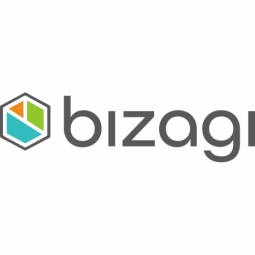
|
IoT Transformation in British Multinational Insurer's Investment Consulting Arm
The British Multinational Insurer, a leading global provider of risk management, insurance, and reinsurance brokerage, was facing significant challenges in managing subscriptions and redemptions of pension funds. The existing system was heavily reliant on insecure email and spreadsheets, which not only lacked visibility and traceability but also posed a risk to compliance with the Financial Conduct Authority (FCA). The process was time-consuming and inefficient, with complex tasks taking longer than necessary. The company was also struggling with risk mitigation, a key aspect of their operations. The lack of integration with the company's core systems, including Eagle and Charles River OMS, further complicated the process.
|
|
|
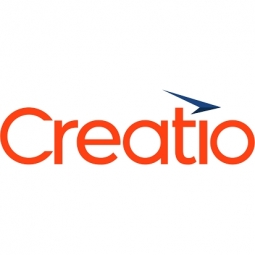
|
Asseco SEE Streamlines Sales Workflows with Creatio
Asseco SEE (ASEE), one of the largest IT service providers in South-Eastern Europe, was facing challenges with its outdated CRM solution. The legacy on-site solution was no longer able to support the required level of sales automation and operational efficiency. The company was also looking to establish a single market approach among multiple group companies with different cultural and technology backgrounds. This was particularly challenging due to the company's complex organizational structure, which consists of multiple business units across 23 countries. Each unit has its own profit center and users allocated to it. Additionally, ASEE also manages cross-unit sales, which added another layer of complexity to the situation. The company was in need of a flexible, advanced solution that could minimize development efforts, easily scale, and support its digital transformation journey.
|
|
|

|
Motorola Solutions: Streamlining Operations with Integrated Tech Ecosystem
Motorola Solutions, a global leader in public safety and enterprise security, was facing several operational challenges. The company was struggling with poor process visibility due to the use of multiple tools for similar use cases, which resulted in data silos. The leadership team was in dire need of a system that could provide a comprehensive view of the enterprise's business operations. Another challenge was the lack of integrations. As the users frequently interacted with, inputted, or pulled data, a system that supported integrations with multiple tools was necessary. Additionally, the company was experiencing a lag in business process updates. As business processes evolve over time, Motorola Solutions needed a system that could keep pace with these changes.
|
|
|
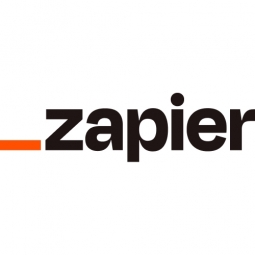
|
Revolutionizing the Jewelry Industry: Taylor & Hart's Journey with Automation
Taylor & Hart, an award-winning jeweler specializing in custom-designed engagement rings, faced significant challenges in scaling their business. The founder, Nikolay Piriankov, recognized that the traditional diamond industry lacked transparency in ethical sourcing and customization. Traditional jewelry shops did not offer personalized experiences, and those that did were either too slow, too expensive, or both. The first bespoke ring they made took a full year to complete due to the numerous moving parts in the business and the need for constant communication among team members. This lengthy process was not only inefficient but also prone to errors in data entry, hindering production and preventing the business from scaling.
|
|




